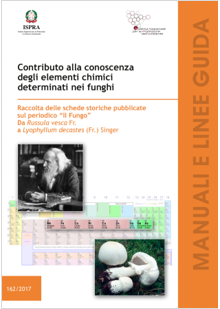Informazione tecnica HSE / 25 ° anno
/ Documenti disponibili:
45.604
/ Documenti scaricati: 34.550.030
/ Documenti scaricati: 34.550.030
ID 24959 | 21.11.2025 / Attached
CEFIC/ECTA October 2025
This document is intended for informational purposes only and provides guidance on greenhouse gas (GHG) emissions calculation, primarily to assist smaller organisations that may not have in-house expertise. It aims to clarify the methodology outlined in the Global Logistics Emissions Council (GLEC) Framework, including Module 5 for the European chemical industry, and to illustrate calculations with examples while highlighting common pitfalls.
The information is provided in good faith and believed to be accurate, but no warranties or guarantees are made regarding its completeness, applicability, or suitability for any specific purpose. This document is not a substitute for reviewing the official GLEC Framework, applicable standards, or regulatory requirements.
_____________
Table of Contents
1. Definition of terms
2. GHG emission accounting process
2.1. Overall guidance on accounting steps
2.2. Visual representation of Chemical Transport Chains
2.3. Importance of emission intensity for comparison & evaluation
3. Guidance to emission intensity calculations process steps
3.1. Step 1: Define TOC/HOC activity
3.1.1. Identify Transport Chain Elements (TCE) of the Transport Chain
3.1.2. Categorize your transport activities into Transport Operating Categories (TOC) and/or Hub Operating Categories (HOC)
3.1.3. Obtain activity information at TCE level in tonne-kilometre or equivalent
3.2. Step 2: Calculate the GHG emissions by TOC/HOC
3.2.1. Assign fuel and energy consumption to the corresponding TOC/HOC
3.2.2. Calculate emissions from own operations
3.2.3. Subcontracting
3.3. Step 3: Calculate the TOC/HOC intensity
3.4. Step 4: Calculate the total Transport Chain emissions
4. Common pitfalls in calculation and reporting to be avoided
4.1. Data considerations
4.2. TOC selection
4.3. Activity calculation
4.4. Subcontracting
4.5. Historical reporting using a standard format
4.6. Transport emissions per consignment
4.7. Payload definition
4.8. Empty running
5. GHG emission accounting in value chain
5.1. Reporting GHG emissions
5.2. Attributing GHG emissions to a single scope or customer
5.3. Modelling GHG emissions
5.4. Data exchange of GHG emission accounting
6. Suggested GHG emission reduction initiatives
7. References to emission factors in the GLEC framework
[...]
Fonte: CEFIC
Collegati

ID 24951 | 21.11.2025
Regolamento di esecuzione (UE) 2025/2289 della Commissione, del 13 novembre 2025, recante mod...

Il presente Manuale è il primo di una serie di quattro volumi e contiene le prime 15 schede storiche pubblicate nella rubrica “F...
Criteri per la realizzazione da parte dei comuni di sistemi di misurazione puntuale della quantità di rifiuti conferiti al servizio pubblico o di sistemi di gestione caratterizza...
Testata editoriale iscritta al n. 22/2024 del registro periodici della cancelleria del Tribunale di Perugia in data 19.11.2024